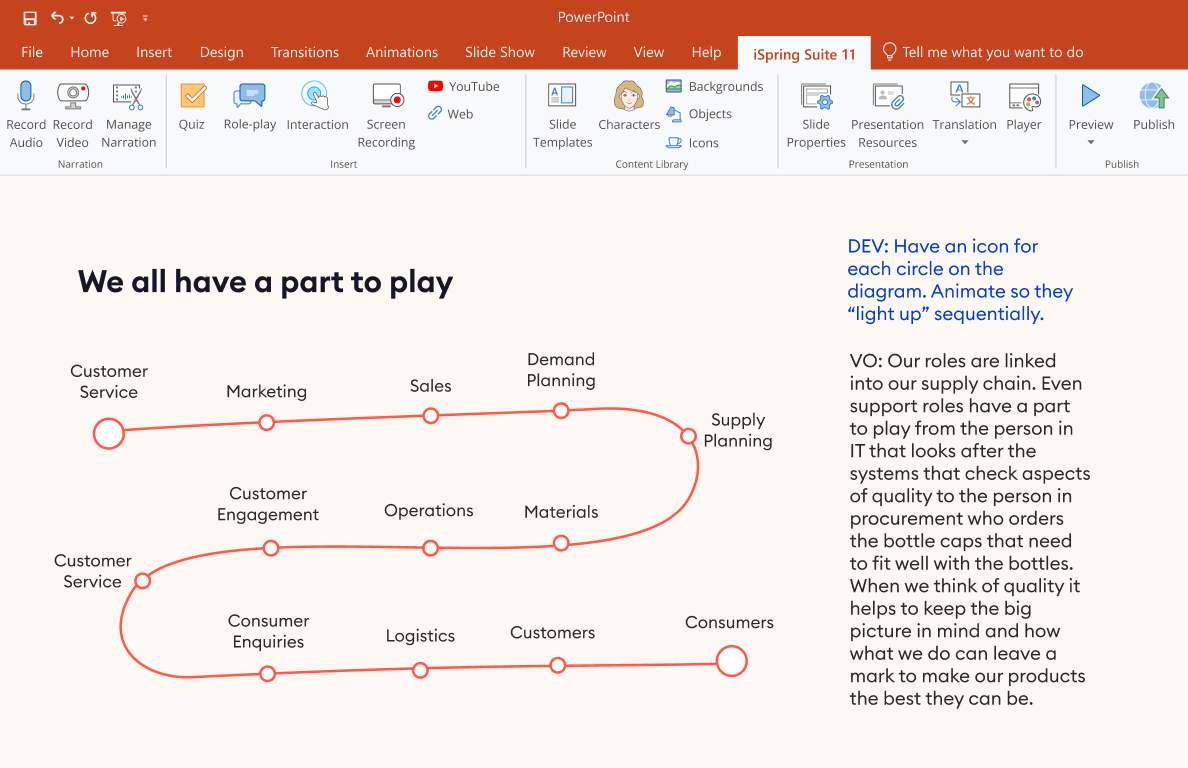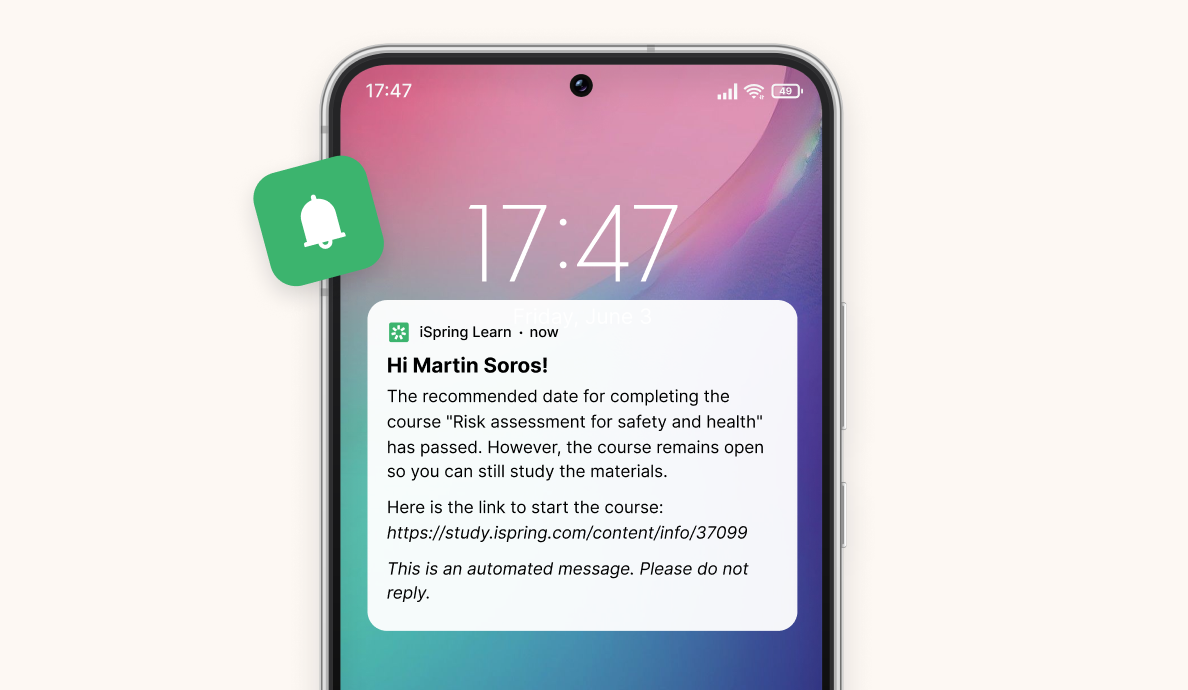Refresher Training: Keep Your Staff Fresh

No matter how diligent we are, what we learn fades over time. The human brain is very efficient at offloading information we don’t use regularly, so we need to find ways to let it know that our stored information is still relevant.
What this means in a learning and development context is that most employees need to review important concepts now and again. This is where regular refresher training comes in. These courses are designed to take learners back to basics so they can review fundamentals they may have forgotten or update their knowledge with new information.
In this article, we take a deep dive into why refresher training sessions are important and how to design and deliver an effective refresher training program.
What Is Refresher Training?
Refresher training is retraining in a subject to refresh your memory and make sure your knowledge is up to date.
The term “refresher course” can be applied to almost any type of training program or intervention. But it is frequently used in compliance and annual safety training sessions, where there are often specific requirements for periodic retraining. It can help to keep important knowledge fresh in employees’ minds, reinforce learning, and embed more complex organizational procedures and processes.
Why Is Refresher Training So Important?
Ignoring knowledge gaps in areas such as policies and procedures, for example, can lead to expensive mistakes for your business, possible miscommunication, or even physical injuries, in the case of missing knowledge of safety protocols. So, regularly offering refresher training and retraining on industry standards is essential.
Besides, learners often report being unable to retain key learning points after a training session concludes and thus recall these concepts when they’re needed. And this isn’t surprising. It’s important to factor in the “forgetting curve,” which basically states that employees forget what they learn in training sessions quickly. It’s estimated that employees forget:
- 50% of what they learn within one hour.
- 80% of what they learn after two days.
- 90% of what they learn after 31 days.
Here’s what the forgetting curve looks like for a single learning event.

Employee refresher course training can reduce the impact of the forgetting curve on an organization’s time, resources, and, ultimately, the bottom line.
Benefits of Refresher Training
Periodic or annual refresher training for employees can help an organization in several ways. Some direct benefits of refresher training include:
- Increased efficiency and knowledge retention
- Fewer mistakes
- Fostering a culture of continuous learning
- Creating parity in employee knowledge
- Keeping employees safe in the workplace
- Achieving regulatory compliance
- Helping to identify training needs and skills gaps
- Increased employee confidence
- Lower turnover rates and improved retention
- Increased awareness of new products, trends, and marketplace information
Signs Your Workplace Needs a Refresher Training Program
As with all other training interventions, you’ll need to do some analysis before deciding if an employee refresher training program would be beneficial to your organization. To start you off, here are six key indicators that could show that refresher training is a good idea.
- Repeated mistakes are being made by multiple employees.
- Employees are underusing, misusing, or not using corporate technology at all.
- New and updated policies are not being followed.
- Productivity decreases, and employee churn increases.
- Workplace accidents and safety incidents are increasing.
- Customer satisfaction rates are plummeting.
It goes without saying that, if at all possible, you shouldn’t wait until you see the abovementioned signs to implement your online refresher training. A proactive approach to continuous learning always pays dividends and will save you a lot of time and money in the long run.
How to Conduct Refresher Training Online with an LMS
In this section, we’ll break down the precise steps you need to take to create, build, and deliver a refresher course. We’ll focus on the online training method, as it’s the most current, popular, cost-effective, and arguably the most effective way to deliver refresher training.
With that in mind, here are the steps to follow so your learners get the most from your refresher course.
Step 1. Make a training plan
The effectiveness of your refresher training depends on aligning it with your company’s goals and opportunities. So, the first things to establish are the purpose of your refresher training and how often you plan to run it. Your refresher training plan should cover the following key points:
Refresher training objectives
These will be unique to your organization, but a sample objective for refresher training could be: “Upon completion of the training, all manufacturing staff will understand and adhere to the latest safety standards and be able to hold all the prescribed emergency procedures.”
Who your audience is and their needs
Here you are to find out what makes your refresher training important. Identify which employees need the training and what the priorities are. Then, determine how you can cater to that specific audience, and reach the learning objectives. This will include deciding which refresher training methods to use, such as online learning, blended learning, or hands-on training.
How often to run refreshment training
This depends on the needs of the organization, but annual refresher training is a good starting point. According to the forgetting curve, you should try to schedule training as close to any compliance deadline or major business initiative as possible to ensure that retention and enthusiasm are at their peak.
What training materials to include
This is often referred to as a “training needs analysis.” The more precisely you define the prior knowledge of your trainees and the knowledge they lack, the more accurate, shorter, and useful the refresher training will be. Check here for a deep dive into how to conduct a training needs assessment.

Step 2. Review existing training material and select new content
As these are refresher classes, chances are you already have materials on hand. Now is the time to review those, deciding what to include, cut, and add. Once you’ve audited the current course content, you can plan how to convert it into an online course and what images, interactions, and other elements to use. This acts as an eLearning storyboard that will map out the structure of your course, making the development process easier.

If you don’t have existing training materials, you’ll need to build your content from scratch by using research, subject matter experts, and other tools available to you. Include only precise, need-to-know information, whether it’s a refresher on a product or an update on a safety compliance training module.
If you decide to use scenario-based training, write new scenarios every year so your learners aren’t able to repeat the same answer from the previous year.
Step 3. Create learning materials
Now it’s time to develop an online course for your training sessions. For this, you’ll need an eLearning authoring tool. There are many options on the market, so you’ll have to research which one will best suit your needs. If you have no prior experience in content development and want to build professional-looking training courses fast, you can try the iSpring Suite AI authoring toolkit — it’s easy to use, even for newbies.
You can quickly convert PowerPoint presentations into engaging online courses, build interactive quizzes, train soft skills with dialogue simulations, create impactful tutorial videos, and make microlearning training courses within minutes. This allows you to cover a wide range of training scenarios, including refresher courses to hone customer service skills, reinforce safety protocols, train your employees’ skills in emergency procedures, or fill urgent knowledge gaps.
Here’s an example of what you can build with iSpring right in your browser:
Step 4. Communicate the “why” with your learners
Nothing saps motivation like the words “mandatory training.” It may be a given that the training is mandatory for compliance requirements. Nevertheless, it can also be something your employees believe is important and will improve the way they do their jobs.
So, don’t wait until the first day of training to communicate the purpose behind the upcoming refresher training sessions. Your organization may have a change manager and a communications method that covers that, but if not, even a short series of emails to prep the trainees and encourage good expectations will go a long way. This will show that your refresher training is both important and useful.
If you provide solid reasoning and address how the training will benefit learners as well as the company, you will encourage buy-in from the employees.
Step 5. Choose your deployment method
Once you’re happy with the content of your refresher classes and you’ve tested the program, it’s time to decide how to deliver it to employees.
The simplest way to do this is usually via a learning management system, which will allow you to automate many of the steps required for successful training delivery — for example, scheduling, sending out invites, registering trainees, and measuring results.

Opting for a user-friendly LMS will allow employees to access training right away without any steep learning curve. Ideally, your LMS should facilitate mobile learning, gamification, and integrations with your existing tech stack to ensure the best possible learner experience.
Also read:
- LMS Benefits For Recruiters, HR, Sales, and Commercial Directors
- Key Recruiting Metrics and How to Improve Them with Online Training
- The Ultimate Guide to Lecture Capture

Step 6. Deliver learning materials
The simplest way to deploy training is usually via a learning management system, which will allow you to automate many of the steps required for a successful training delivery. These include scheduling, sending out invites, registering trainees, and providing results.
If you still don’t have an LMS, you can try iSpring LMS. It’s an easy-to-use system that allows you to get your courses online and delivered in just a few clicks. Plus, it has recurring enrollment features that will help you make refresher classes completely automated.
Instead of manually enrolling users in your online training every time, you can set up automatic course re-enrollments. They will repeat at specific intervals, and you can just track the results – which employees have started and finished a course, what scores they got, and more.
Moreover, it comes with a user-friendly mobile app so employees can access refresher training from any device, at the point of need, either in their workplace or on the way to work.
Step 7. Ask for feedback
Don’t forget to be proactive in asking your learners what worked, what didn’t, and what they would like to see in future refresher courses. This feedback is critical, as you can use it to improve next year’s course.
iSpring LMS comes with robust analytics and reporting so you can monitor key performance metrics closely and pinpoint areas of improvement.
FAQ
Here we’ve answered the most commonly asked questions about employee refresh training.
What is the purpose of refresher training?
The purpose of an effective refresher training program is to review and reinforce knowledge that employees have previously learned, either on the job or during formal educational programs. Not only does this improve competence, reduce errors, and encourage continual growth, but it also ensures that your organization remains compliant with relevant rules and regulations.
What is refresher and updating training?
This is a specific type of ongoing training provided to employees who have already completed initial training on the subject or have previous knowledge of the topic. This type of training aims to update and refresh employees’ understanding of the subject, improve their confidence, and ensure they’re up to speed on the latest changes or developments.
How often do you need refresher training?
This depends on the topic, industry, and context. In some heavily regulated industries like healthcare or aviation, staff must take annual refresher training to maintain their certifications and stay updated on the latest procedures and protocols.
It’s also recommended to provide employee training whenever there are new technologies or updates in the company or sector.
Final Thoughts
This wraps up our examination of the importance of refresher training. Businesses don’t have to look very far to see the benefits of providing staff with regular refreshment training; improved safety, performance, competence, and compliance are just a few of the rewards your organization can reap.
Get an iSpring LMS 30-day trial and enjoy the benefits of an employee refresher training today.









